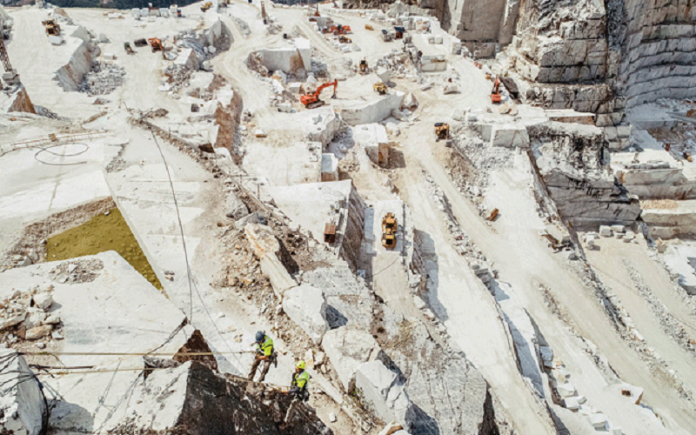The Altissimo quarries, located in Italy’s 1589m high Apuan Alps, in northern Tuscany, Italy, have greatly evolved from their inception in the Roman Age to the present day.
According to Reuters, after renowned artist Michelangelo climbed one of the peaks to obtain marble for his statues in 1517, the quarries went through cycles of abandonment and re-discovery.
In 1821, Marco Borrini, a local landowner, teamed up with French businessman Jean Baptiste Alexandre Henraux to start a new quarrying company. Within a decade, the Henraux business had developed rapidly, with the number of quarries increasing from 11 to 132.
The venture is said to have brought “new life” to the economically depressed area, employing hundreds of quarrymen, squarers, sled men, stone cutters and cart drivers who guided oxen trains. The number of workers rose to 1600, with approximately 2450 stonecutters working in the area in 1830. During this time, marble was supplied to the Tsar of Russia for St Isaac’s Cathedral in St Petersburg and to American sculptor Hiram Powers, whose works are now on display at the Metropolitan Museum of Art in New York.
Modern techniques
What hasn’t changed significantly over the years is what is required prior to the extraction process. Experts known as ‘tecchiaroli’ hang on ropes from the sides of the mountain and pick at its sides with pointy iron bars to remove loose rock that could fall and hurt workers in subsequent phases of the extraction.
However, the tools used to quarry the marble in the area have undergone a radical upgrade. Archaic instruments such as levers, chisels and hammers later evolved with the introduction of helical wires in the 19th century and diamond-tipped wires, saws and heavy earth-moving equipment.
The local marble quarrying industry has not escaped criticism, however. Italian environmental groups have charged that excavations in the Apuan Alps have been ‘ruinously thorough’.
Members of the marble industry counter that they have voluntarily scaled back the amount of quarrying being done in the mountain range. This is especially since the regional government introduced tighter restrictions designed to limit extraction from greenfield areas and encourage increased environmental care.
A UK Telegraph report in 2015 estimated current extraction rates are in the vicinity of one million tonnes per annum.
The Apuan Alps continue to supply marble worldwide. Again, according to the Telegraph, marble exports are worth €330 million ($AUD480 million) per annum to the Italian economy.
Source: www.quarrymagazine.com








































